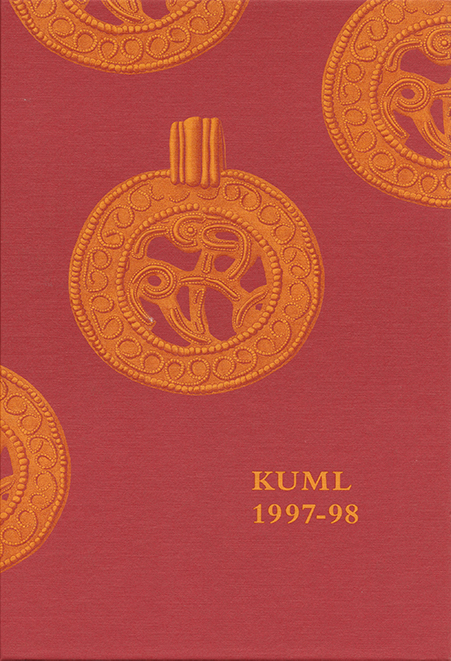The production of thrown pottery in the Ribe area towards the end of the late Germanic Iron Age
DOI:
https://doi.org/10.7146/kuml.v41i41.113365Keywords:
Thrown pottery, production, ribe, late Germanic iron ageAbstract
The production of thrown pottery in the Ribe area towards the end of the late Germanic Iron Age
Origin determination using magnetic susceptibility and thermoluminescence
lnvestigation of the oldest culture layers of Ribe, which was initiated in 1973, has resulted in a huge amount of material from the late Germanic Iron Age and Early Viking Age. It includes a considerable amount of imported pottery, mainly from the Rhine areas. However, the origin of same of this pottery has not been determined, even though it has been examined by dozens of foreign collegues. Of special interest is a group of coarsely tempered vessels with flat bottoms, which have been thrown on a potter's wheel (fig.1 and 4).
Over the years 380 fragments of this particular type of pottery have turned up in Ribe (fig. 2), where it can be dated to the period c.720-750. In 1995 and 1996, 51 sherds were found in a pit house settlement by Okholm, around 8 km south-west of Ribe (fig. 3). This find fuelled the theory that this coarse, thrown pottery was produced in the Ribe area.
It was therefore decided to attempt an origin identification for this particular type of pottery using a new method which has been successfully employed for pottery from Halikarnassos. The method is based on the measuring of a vessel's magnetic susceptibility. For this purpose 19 sherds of the coarse, thrown pottery (fig. 4) and 19 sherds of a guaranteed local pottery type (fig. 5) were selected. For comparison 8 sherds of Badorf-pottery (fig. 6) and 7 sherds of the characteristic Muschelgrus-pottery (fig. 7) were selected.
Fig. 8 shows the magnetic susceptibility as one graph for both the local and the thrown pottery from Ribe. It also shows the corresponding graphs for the Badorf-pottery from the Rhine area and the Muschelgrus pottery from the Friesian area. It is obvious that the local and thrown pottery from Ribe cannot be distinguished from one another, whereas there is a clear difference between these two and the Badorf and Muschelgrus pottery.
In fig. 9 the magnetic susceptibility has been marked along the y-axis and the integrated TL-signal along the x-axis. Again, it is impossible to distinguish the local pottery from Ribe (L) and the thrown pottery from Ribe (D). In a similar way, the local and the thrown pottery from Okholm make up one group. The Badorf pottery and the Muschelgrus pottery form similar, independent, groups.
The scientific analyses of the pottery thus strongly supports the theory that the coarse, thrown pottery was actually made in the Ribe area. At the same time the analyses show that the thrown pottery from Ribe was made from a different type of clay to that used for the thrown pottery from Okholm -and that they were both made from the very same clay as the local pottery from the areas in which they were found. The explanation must be that thrown pottery was made in Ribe and Okholm, and that in both places the same clay was used for the local pottery.
The result is surprising. Up to now it has been presumed that thrown pottery was not produced in Denmark until the Middle Ages, around 1200. However, the Ribe finds show that the potter's wheel was already in use in this area almost 500 years earlier -if only for a short period between 720 and 750.
Claus Feveile, Stig Jensen, Kaare Lund Rasmussen
Downloads
Published
How to Cite
Issue
Section
License
Fra og med årgang 2022 er artikler udgivet i Kuml med en licens fra Creative Commons (CC BY-NC-SA 4.0).
Alle tidligere årgange af tidsskriftet er ikke udgivet med en licens fra Creative Commons.


